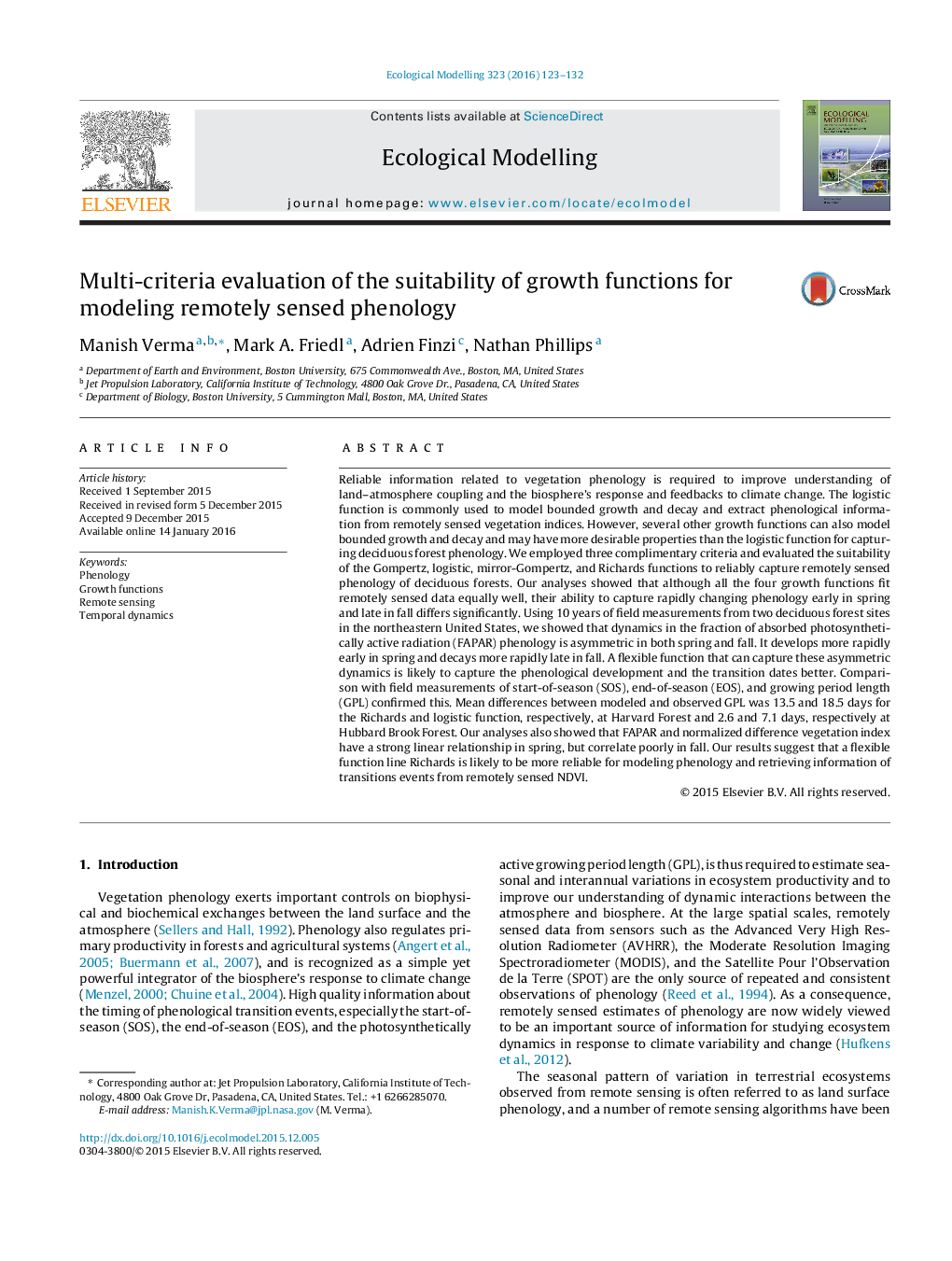| Article ID | Journal | Published Year | Pages | File Type |
|---|---|---|---|---|
| 4375600 | Ecological Modelling | 2016 | 10 Pages |
•Phenology plays an important role in terrestrial mass and energy fluxes.•Remotely sensed data is used to extract start- and end-of-season estimates.•We examined the potential of four growth functions for retrieving phonological information.•We employed three complementary criteria.•Richards function performed better than the commonly used logistic function.
Reliable information related to vegetation phenology is required to improve understanding of land–atmosphere coupling and the biosphere's response and feedbacks to climate change. The logistic function is commonly used to model bounded growth and decay and extract phenological information from remotely sensed vegetation indices. However, several other growth functions can also model bounded growth and decay and may have more desirable properties than the logistic function for capturing deciduous forest phenology. We employed three complimentary criteria and evaluated the suitability of the Gompertz, logistic, mirror-Gompertz, and Richards functions to reliably capture remotely sensed phenology of deciduous forests. Our analyses showed that although all the four growth functions fit remotely sensed data equally well, their ability to capture rapidly changing phenology early in spring and late in fall differs significantly. Using 10 years of field measurements from two deciduous forest sites in the northeastern United States, we showed that dynamics in the fraction of absorbed photosynthetically active radiation (FAPAR) phenology is asymmetric in both spring and fall. It develops more rapidly early in spring and decays more rapidly late in fall. A flexible function that can capture these asymmetric dynamics is likely to capture the phenological development and the transition dates better. Comparison with field measurements of start-of-season (SOS), end-of-season (EOS), and growing period length (GPL) confirmed this. Mean differences between modeled and observed GPL was 13.5 and 18.5 days for the Richards and logistic function, respectively, at Harvard Forest and 2.6 and 7.1 days, respectively at Hubbard Brook Forest. Our analyses also showed that FAPAR and normalized difference vegetation index have a strong linear relationship in spring, but correlate poorly in fall. Our results suggest that a flexible function line Richards is likely to be more reliable for modeling phenology and retrieving information of transitions events from remotely sensed NDVI.
